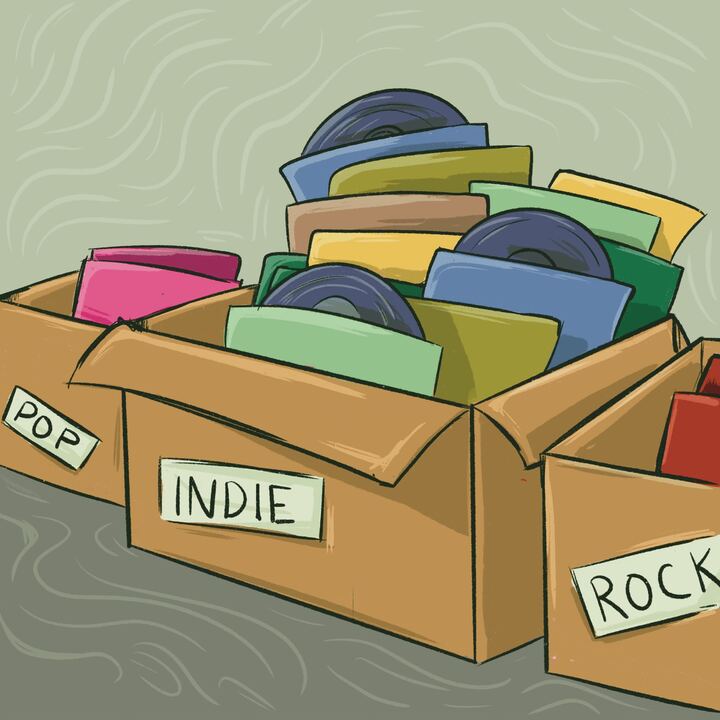Forum
A label beyond sound: The appeal of indie
 Illustration by Jaime Hebel
Illustration by Jaime Hebel When I ask what genre of music a friend listens to, the response is often “indie” — followed by a slew of artists’ names. However, the listed musicians may be completely unrelated in sound, style, or feel. As artists and listeners continue to label their music as indie, the term becomes nothing more than a vacuous buzzword. Is there a better option?
Although we consider indie a modern genre, it has been around in some shape or form since the 1950s. This original definition of indie refers to independent music groups or record labels — basically, the lack of association with major corporate record labels. However, the term became more widely used after its attribution to the DIY rock scene of the 1980s. Bands like The Smiths and later, R.E.M., proved that music groups unaffiliated with large record labels could attain immense success, causing the number of independent labels to boom.
As the sound of these bands grew mainstream, a new name for the sound was added: alternative rock. The term indie stuck around as well, causing some to use the two interchangeably.
Now, as the music industry moves into the streaming era, releasing music has become easier than ever, and as a result, indie music, as it was originally defined, is at an all-time high. Independent artists upload tens of thousands of songs to Spotify each day, not to mention to other music streaming services like SoundCloud.
In response, Spotify works fervently to sort music into distinct genres, often making up new ones when necessary. In 2016, Spotify classified its music into 1,482 genres. Today, the music app boasts over 6,000.
Many of these newly fabricated genres appear obscure and strange to listeners and artists alike, resembling nothing more than randomly generated gamer tags. After all, what is vaporwave, fallen angel, or deep psychobilly?
Then again, Spotify does not have much of a choice. As music streaming services break down geographic and temporal limitations, and as critics celebrate the creation of “new sounds,” genre-blurring is at a record high. In the meantime, music streaming services must find a way to categorize and offer recommendations to their listeners. Humans need genre to understand music, or at least to sell it.
Nevertheless, Spotify’s homemade genres have yet to catch on to most listeners’ vocab. Instead, terms like indie and alt take the cake. But why have we been so eager to label music as indie for the last three decades, and why can’t we let go? Why do we label disparate artists such as Noah Kahan, Radiohead, and Mac DeMarco as the same “genre”?
The answer lies in the origin of the term. Independent labels have consistently resembled an anti-institutional sentiment — their opponent being the major record labels that have dominated the music industry since its beginning.
As we consume art, we want to feel that it is genuine, to feel like it was made as art — not as a product to be marketed and sold. This has been the message of true indie music since its beginning. This is the message that listeners want to tell themselves, and it is why people are so eager to label their taste as indie — even if the music does not obviously match the sound or the imperative that indie was originally intended to represent.
Indie is not the first genre to claim separation from the corporate world. From jazz to rock to hip-hop, music genres like indie have risen alongside countercultural movements. Now, more than ever, listeners need to feel that the art they consume is not another product of the corporate world.
Although indie can not be used to describe a particular sound, it may be used to describe a band or song’s ethos.
I expect that we will continue to label our music as indie for some time, but when all the significance has been wrung out of the word, be prepared for a new term to take its place.
